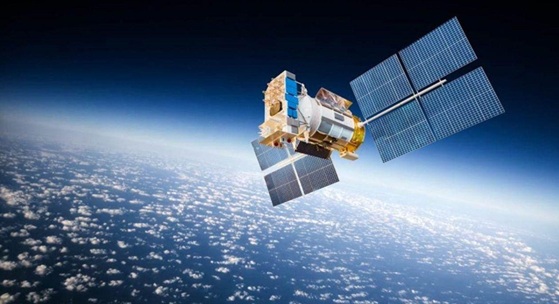| (Prelims: Current Affairs) |
Why in the News
AstroSat, India's first dedicated space astronomy observatory, completed 10 years of operation on September 28, 2025.

About AstroSat
- AstroSat is India's first multi-wavelength space observatory, designed to study various aspects of the universe.
- This observatory is capable of simultaneously observing in the visible, ultraviolet, low- and high-energy X-ray regions.
- Its unique feature is that it can study different parts of the electromagnetic spectrum from a single platform, which makes it different from other observatories in the world.
- AstroSat was built by ISRO, with collaborations from several Indian universities, including the Inter-University Centre for Astronomy and Astrophysics (IUCAA) in Pune, the Tata Institute of Fundamental Research (TIFR) in Mumbai, the Indian Institute of Astrophysics (IIAP) in Bengaluru, the Raman Research Institute (RRI), and two institutes in Canada and the United Kingdom.
Launch and Duration
- AstroSat was launched on September 28, 2015, from the Satish Dhawan Space Centre in Sriharikota, aboard a PSLV-C30 (XL) rocket.
- It was placed in low Earth orbit at an altitude of 650 kilometers.
- Its design mission life was five years, but it is still fully functional and providing data until 2025.
- At the time of launch, ISRO dubbed it India's "Hubble," reflecting India's autonomy in astronomical research.
- The mission cost approximately ₹178 crore, making it cost-effective and technologically advanced.
Features
- Weight: Approximately 1,513 kg.
- Orbit: Low Earth orbit at an altitude of 650 km, with an inclination of 6 degrees.
- Power: Powered by solar panels, 2,250 watts of power.
- Data collection: Multi-wavelength observations, ranging from ultraviolet to high-energy X-rays.
- Control: Operated by the ISRO Telemetry, Tracking and Command Network (ISTRAC) in Bengaluru.
- Lifespan: 5 years by design, but operational for more than 10 years.
Payloads
AstroSat carries five scientific payloads, enabling it to study various aspects of the universe:
- Ultraviolet Imaging Telescope (UVIT): High-resolution imaging of stars, galaxies, and other celestial bodies in ultraviolet and visible light.
- Large Area X-ray Proportional Counter (LAXPC): Study of sources such as black holes and neutron stars in high-energy X-rays.
- Soft X-ray Telescope (SXT): Observation of hot stars and gas clouds in low-energy X-rays.
- Cadmium-Zinc-Telluride Imager (CZTI): Detection of high-energy X-rays and gamma rays, especially gamma-ray bursts.
- Scanning Sky Monitor (SSM): Monitoring variable X-ray sources in the sky, such as supernova explosions. These payloads work together to collect data from different parts of the universe, giving scientists a comprehensive view.
Achievements of the Last 10 Years
- Black Holes and Neutron Stars: It helped understand the behavior of black holes and neutron stars, especially through X-ray emissions.
- Exploration of Distant Galaxies: For the first time, far ultraviolet (FUV) photons were detected from galaxies 9.3 billion light-years away.
- Study of Proxima Centauri: Analysis of ultraviolet and X-ray data of the nearest star, Proxima Centauri.
- Gamma-ray Bursts: CZTI detected several gamma-ray bursts, the most powerful events in the universe.
- Star Formation: UVIT provided high-resolution images of star-forming regions, helping to understand the birth and evolution of stars.
- Global Collaboration: With over 500 scientific publications and over 2,000 observation proposals, AstroSat has provided data to the global scientific community.
- Data Accessibility: ISRO has made AstroSat data available in the public domain, benefiting researchers worldwide.
These achievements have given India a strong foothold in the international astronomy community. ISRO calls it "India's pride in astronomy," and it expects further discoveries in the next few years.


